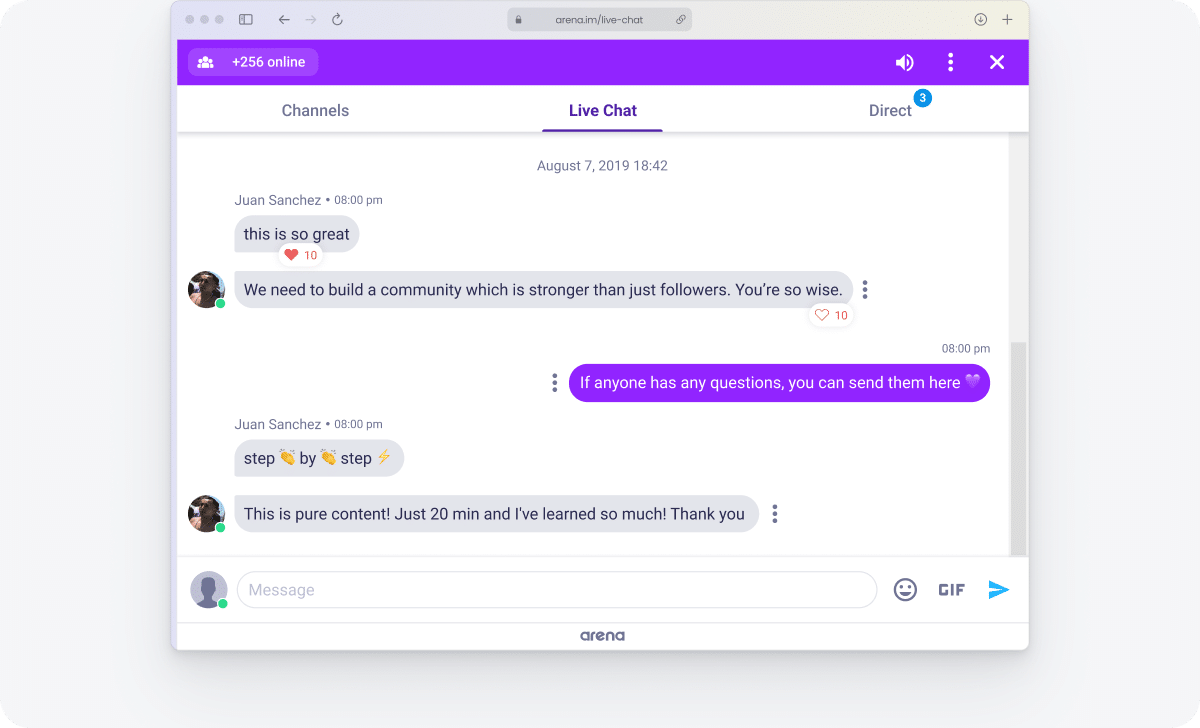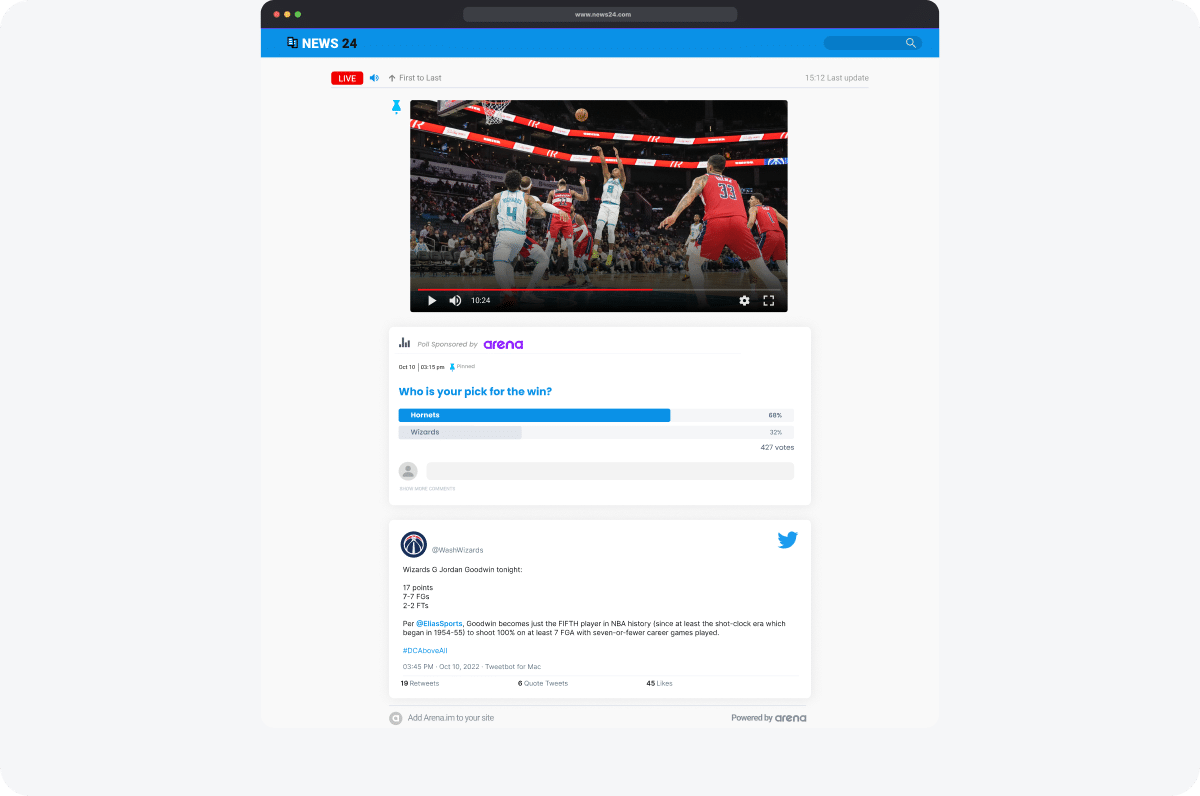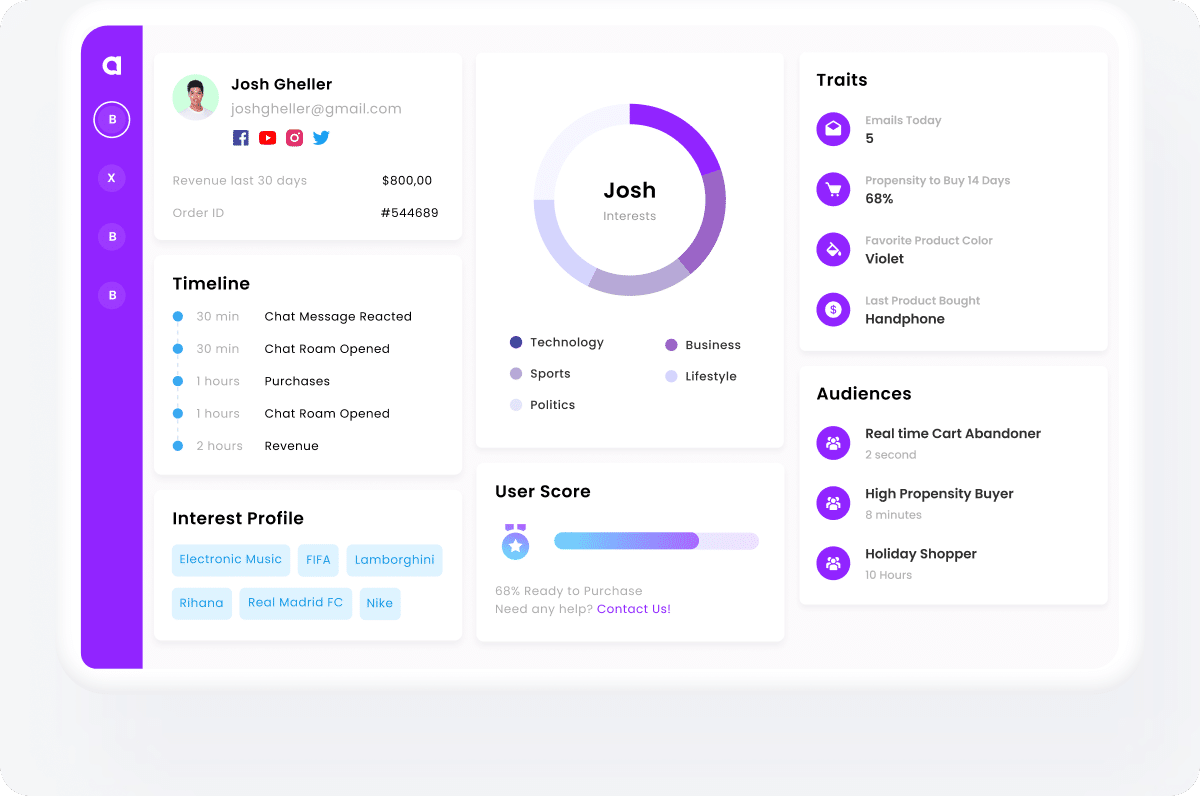






The coming end of third-party cookies means brands and publishers need to evolve. The road forward lies in embracing first-party data. First-party data refers to information your organization has collected from customers and users. As third-party cookies are ending, brands should focus on first-party data.
Got First Party Data Party FOMO?
First-party data is crucial to engaging your audience and customers. It gives you a rich understanding of what your audience wants. Even more powerful, collecting first-party data means you’re building a direct relationship with customers and audience members.
Despite these benefits, many organizations have yet to use first-party data fully. Several reasons for that slow adoption include a need for the right technology. In some cases, first-party data may be viewed as a marketing technology project rather than the lifeblood of growing your audience.
Google’s research shows that investing in personalization offers excellent results. Specifically, the company found “a personalized approach increased the brand’s ROI between 12% and 35%, depending on the marketing channel.” Thriving in the new digital reality defined by first-party data is vital. Use the following strategies to build first-party data into your business.
5 Strategies To Create Sustainable First-Party Data
Charting your path to audience engagement and growth in a first-party world starts with the right approach.
1. Define your goals for first-party data

Gathering and using first-party data will take time, effort, and resources. Before making those investments, it’s wise to take a few moments to clarify your goals. Ideally, your first-party data objectives should be linked to other organizational goals (e.g., revenue, engagement, etc.).
We recommend creating a mix of quantity and quality goals to inform your approach. For example, you might set a goal of growing your online audience of registered community members by 10,000 people. To ensure your community is growing effectively, add a quality goal, such as at least 20% of registered users making a posting on your website once per month.
For more guidance on using community tactics and technology to grow, see our post: Ways To Use Community Tactics & Tools To Hit Your Goals.
2. Answer the “what’s in it for your audience” question

It’s not 2010 anymore – expectations around user privacy and legal changes have changed the conversation. In other words, the days of relying on sneaky methods to gather data from users are over. Instead, success in a first-party data world means offering a compelling value exchange to your audience in return for their data.
Your approach to earning first-party data from your audience will be more successful by making multiple offers to your audience. For example, a consumer brand might offer a discount code or access to a sale in return for first-party data. Discount offers aren’t suitable for every situation, though.
Another way to answer the “what’s in it for me?” questionis to focus on your community. For instance, you may offer exclusive online events with influencers, company leaders, and others to those who sign up for events. In this way, your audience receives a clear benefit – insights and new connections – in return for providing their data.
3. Build your first-party technology platform
Once you have your goals and value proposition, it’s crucial to have the right technology in place. Arena has a suite of solutions to help you earn and use first-party data.

Use Live Chat to create engaging community experiences directly on your website. Arena Live Chat is a lightweight application that can be added to any site in minutes. When you use live chat to offer exclusive experiences, you’ll give your audience a reason to keep coming back to your website. Over time, you’ll gather more data to understand your audience’s preferences better so you can connect better with them.

Are you a publisher covering breaking news for your audience? Keep your audience focused on your website as the place to get live updates rather than social media. Arena also makes it easy to pull in social media posts that meet your brand guidelines.
Arena Personas (Beta)

Arena Personas (Beta) make it easy to segment your audience based on their behavior (e.g., clicks on content) and interests. It’s a powerful way to organize all the first-party data you’re gathering through live chat and live blog experiences.
4. Apply “test and learn” thinking to first-party data

Marketers and publishers have relied on third-party cookies for over a decade. Marketing systems, habits, and processes have all been built to leverage those cookies. Making the switch to a first-party data world wouldn’t happen overnight.
Ease the pressure on your time to adopt a test-and-learn philosophy. It may take trying plenty of new ideas to generate and use first-party data. Then review what’s working every 90 days before making additional changes.
To illustrate this strategy, let’s look at two parts of your audience defined by their first-party data.
Audience Segment 1: Product Interest
For example, you might create a test assuming that people who have clicked on multiple product pages in a short period are ready to buy. You can test that idea by emailing offers to that part of your audience. If they don’t respond, it may be time to test a different marketing message or portion of your audience.
Audience Segment 2: High Chat Engagement
You may find that people who view product pages don’t fully appreciate the value of your brand yet. In that case, you may want to test a campaign with a different segment – like audience members who have participated in several chat sessions – responding to your messages better.
5. Update your measurement processes

The way your organization measures the value of first-party data will need to evolve. Examine how marketing campaigns and tests using first-party data compare to other efforts.
While measurement is essential, a word of caution is in order. As mentioned above, first-party data centric marketing may be new to your organization. Keep your expectations reasonable as your team transitions to first-party data. Creating a digital community on your website will take time to pay off.
Equip Your Organization For First-Party Data
Thinking about the role of first-party data will only take you so far. The next step is to get out there and gather data from your audience. Simply asking for permission to gather data can help, but that’s an incomplete solution.
You also need engagement technologies like Arena Live Chat and Arena Live Blog to offer experiences for your audience.